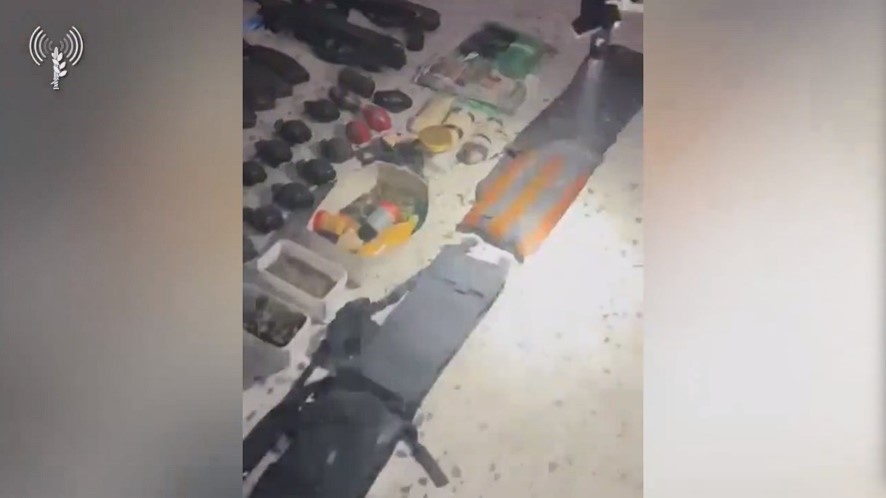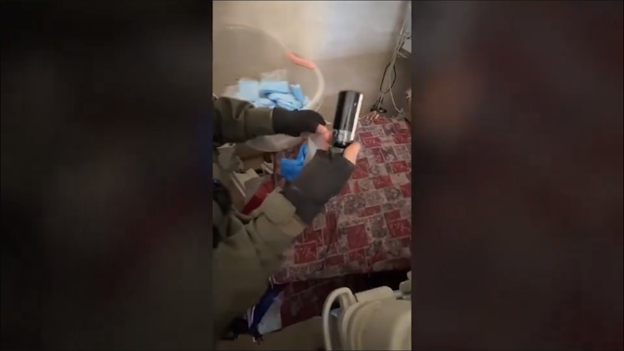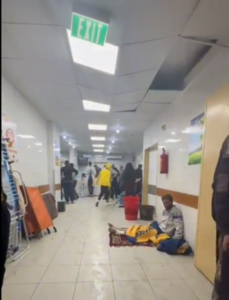[Editor’s Note: This is Part Two of what will be a five-part series addressing five categories of flaws repeatedly found in CNN investigations into allegations against Israel. Find Part One, regarding the omission of exculpatory information, here. Part Three will address the use of one-sided and dubious “expert” analysis. Part Four will address the use of skewed context and language. Part Five will address the partisan agenda repeatedly found in the investigations. Note that these issues are not universal at CNN, and there are outstanding CNN journalists and fair-minded hosts. Nonetheless, these issues are pervasive enough that they require exposure.]
Ignoring Questions of Reliability
A common concern with CNN investigations is the frequency with which they mislead the audience about the reliability of the evidence presented. Often, this takes the form of omitting details that cast serious doubt on the credibility of witnesses or other evidence used to make allegations against Israel. Other times it takes the form of misleading the audience about the strength of evidence in support of Israeli claims, falsely portraying situations as “he said she said” situations. Sometimes, even objective facts are rebranded as “Israeli claims.” The tendency to leave unexplained how evidence was acquired similarly raises questions about whether the conclusions are actually supported by the facts.
Below are examples of these shortcomings from three of CNN’s investigations into allegations against Israel.
- The Kamal Adwan Hospital Investigation (Background available here)
CNN’s Kamal Adwan Hospital investigation illustrates multiple ways in which the relative credibility of witnesses, or rather lack thereof, is hidden from readers. The article includes allegations of a number of horrendous abuses at the hospital by Israeli forces, including digging up and desecrating bodies, shooting innocent doctors, and falsely accusing innocent civilian men of being terrorists. Almost all of the evidence comes from statements by three hospital staff: Hossam Abu Safiya, the head of pediatrics; Eid Sabbah, the head of nursing; and Asmaa Tanteesh, a nurse. The article mentions satellite imagery and video footage, but this evidence supports only the proposition that a burial spot was dug up and little else.
One way in which the article gives a false appearance of credibility to the three witnesses, while downplaying the credibility of contrary Israeli statements, is by not sharing the existence of material evidence that makes one of the claims by the hospital staff highly unlikely. This, in turn, raises questions about the truthfulness of their other claims.
Specifically, the three hospital staff would have us believe that hand grenades are standard equipment for hospital security guards instead of terrorists.
After referencing a video showing a number of military-age males carrying weapons above their heads as they exit the hospital, CNN quotes Tanteesh saying that there “weren’t any resistance fighters in the hospital.” The article also cites Abu Safiya and Sabbah for the claim that “the guns that they were pictured with had belonged to hospital security guards.”
The authors also include a statement from the IDF that it found numerous weapons, including RPGs and explosive devices at the hospital.
But this suggests a “he said she said” situation when, in fact, only one side has produced evidence supporting its claim. The IDF didn’t just say there were weapons. They released multiple videos showing soldiers finding weapons, including hand grenades, hidden inside the hospital. In one video, a soldier is seen pulling out what appears to be a makeshift grenade from an incubator for infants, apparently after unidentified hospital workers confessed about the presence of hidden weapons there.
It’s unclear whether the journalists, Abeer Salman and Kareem Khadder, bothered to press the three staff members as to why hospital guards would need hand grenades. It is also unclear why, given this extraordinarily dubious claim made by those three witnesses, the journalists go on to rely on those same witnesses for other sensationalist claims.

A still from a video released by the IDF showing weapons found in Kamal Adwan Hospital, including hand grenades.

A still from a video released by the IDF showing what appears to be a hand grenade that was pulled out of an incubator seconds earlier at Kamal Adwan Hospital.
Another reason their claims must be treated with skepticism: they work at a Hamas-administered hospital. To be clear, the article does acknowledge that the hospital “falls under the administration of the Ministry of Interior,” suggesting to the audience there is a conflict of interest here. But leaving the issue at that is entirely inadequate, as it does inform that the same Hamas-run Interior Ministry has both motive and a long record of lying about the use of such hospitals by Hamas terrorists. Nor do the authors warn their audience that there is an established record of hospital officials in Gaza lying about these things, too.
Consider, for example, that both Hamas officials and the director of al-Shifa Hospital repeatedly denied that there was any presence of Hamas terrorists, weapons, or infrastructure at the hospital.
By mid-November, these lies were already being publicly exposed with incontrovertible evidence, including drone footage showing the location of terror tunnels underneath the hospital, caches of weapons found inside, and CCTV footage of armed terrorists bringing in hostages by the front door in broad daylight. Since then, U.S. intelligence has independently confirmed that Hamas used the hospital as a command center, too.
Abu Safiya, who is the sole source of evidence for the most sensationalist allegations, has himself previously made claims and used rhetoric that should have put CNN on alert. For example, when speaking to Arabic-language news outlets, Abu Safiya displays a fondness for Holocaust inversion, referring to Israelis as “Nazis.”
On October 29, he also wrote an op-ed for the New York Times, claiming that his hospital was “down to the last gallons of fuel necessary to run the electric generators, despite our most stringent efforts to ration it…” He continued, “Lights are off most of the time…When the fuel runs out, we will no longer be able to function at night after the sun goes down.” A few days later, Safiya again claimed that the hospital only had two units remaining with power “amid a severe fuel shortage.”

A still from a video published by the Hamas-affiliated Quds News Network on November 21, 2023, showing Kamal Adwan Hospital brightly lit during the daytime.
Yet, on November 21 – more than three weeks after saying the hospital was “down to the last gallons of fuel” – video posted by the Hamas-affiliated Quds News Network showed the entrance to the hospital still brightly lit during the daytime. It doesn’t appear that the hospital received any fuel from aid shipments, either. A week after the Quds News video, Muhammad Zaqout, the head of hospitals in Gaza, was still claiming that no fuel had been delivered to Kamal Adwan Hospital. It raises the obvious question of whether Abu Safiya was being honest about the supply of fuel.
Abu Safiya was also one of the Gaza health officials involved in spreading the lie that an Israeli airstrike hit al-Ahli Hospital on October 17. MedGlobal, the organization for which Abu Safiya serves as the lead physician in Gaza, put out a statement that night claiming, “500 people have been killed in the Israeli bombing of [al-Ahli] Baptist Hospital.” The statement then directly quoted Abu Safiya as saying, “We expect more hospitals to be bombed.” Of course, Israel did not bomb al-Ahli Hospital, and the death toll was almost certainly far below the claimed figure of 500.
Worth noting is that CNN itself fell for that Hamas propaganda, before being forced to issue a mea culpa.
Perhaps Abu Safiya is being honest. But given his background, it should be obvious that his testimony alone cannot be relied upon to make horrific allegations against Israelis. And Abu Safiya’s testimony provides the only supporting evidence for all but a few of the allegations in CNN’s article.
Which leads to another way in which CNN misleads its audience about how seriously it should treat the claims of such witnesses. As explained by one speaker at a Chatham House expert meeting in reference to allegations against Israel during a previous conflict, investigators need to be open about “the difficulty in obtaining information in a political environment dominated by Hamas.” Hamas has long imposed sweeping restrictions on coverage of the conflict. As captured by MEMRI, during the war in 2014, Hamas’s Interior Ministry – which administers Kamal Adwan Hospital – “issued guidelines to Gaza Strip social media users for reporting events and discussing them with outsiders,” including that “anyone killed or martyred is to be called a civilian,” and to “avoid publishing pictures of rockets fired into Israel from city centers.”
Gazans are thus put under tremendous intimidation to not tell the truth, especially given Hamas’s propensity for summary executions of those it accuses of “collaboration.”
To illustrate the climate of fear, consider a November interview from France24 with a British doctor who had worked at al-Shifa Hospital just two years earlier:
Doctor: “The main point was when I was first asked to work there, I was told that there was a part of the hospital I was not to go near, and if I did, I’d be in danger of being shot.”
France24: “Shot? You mean actually shot with a gun? Was it explained to you why that was?”
Doctor: “No, but implicit was that it was being used for non-medical purposes.”
France24: “And did you see anything non-medical or did you buy the instruction and stay away?”
Doctor: “I stayed away, but I saw a few dodgy-looking non-medical characters going in and out all the time. It was a ward leading to a basement. As I said, I didn’t go there, so I behaved myself.”
France24: “They would say there could be many other reasons that you would be told not to go to a particular area of a hospital. It’s not unusual.”
Doctor: “Well I was welcome everywhere else, and as I say the doctors and nurses there were very welcoming and very kind. And the hushed tones under which this was said was very consistent with all the other hushed tones with which Hamas was discussed. You know, people were genuinely fearful. I cannot emphasize too much the air of collective paranoia that existed there.”
Individually and together, these issues raise significant questions as the to the reliability of the claims being made. By hiding, or at best inappropriately downplaying, these issues, the authors are misleading their readers.
- The Abu Akleh Investigation (Background available here)
Sometimes, the question of credibility of witness claims comes down to something much more fundamental: were they actually in a position or capacity to know what they are claiming?
The Shireen Abu Akleh investigation provides a good example of this problem. In this investigation, the authors (Zeena Saifi, Eliza Mackintosh, Celine Alkhaldi, Kareem Khadder, Katie Polglase, Gianluca Mezzofiore, and Abeer Salman) alleged not just that the bullet which killed the journalist came from the IDF, but that she was targeted by Israeli soldiers.
Consider two of the three eyewitnesses presented for the proposition. One is Jamal Huwail, who says “he believed the shots were coming from one of the Israeli vehicles” and is quoted saying, “They were shooting directly at the journalists.”
The problem? Based on CNN’s own article, there is no reason to believe he was actually in a position to see any of this. The article identifies where he was earlier in the day – at a roundabout down the road from where Abu Akleh was killed – but then states that “[t]he next time he saw her up close, she was dead.” Never explained is where he was at the moment Abu Akleh was shot. It leaves open the question of on what basis Huwail is able to claim that the shots were coming from the Israeli vehicles and that they “were shooting directly at” Abu Akleh.
This isn’t nitpicking, either. Indeed, the authors themselves try to hold Israel to this standard, writing that “neither Israel nor anyone else has provided evidence showing armed Palestinians within a clear line of fire from Abu Akleh.” (Notably, this is an odd proposition given that CNN’s own map of the incident shows that Palestinian terrorists were further down the same, straight road as the Israeli forces and there is no evidence presented as to what would have obstructed their line of fire to Abu Akleh)
The second witness is Shatha Hanaysha, who was next to Abu Akleh when she was shot. For the proposition that the Israeli forces “targeted” Abu Akleh, the journalists presented this exchange:
Hanaysha: “But I think they want to kill us. This is why they shoot. I don’t have another reason why they shoot. And they know that we are journalists.”
CNN: “It felt targeted?”
Hanaysha: “Yeah…”
In other words, the evidence from Hanaysha that the IDF “targeted” Abu Akleh is Hanaysha’s thoughts and feelings. This is not to mention that according to CNN itself, Hanaysha was 200 meters away from those whose minds she is reading.
Worth noting, too, is that both Hanaysha and Huwail had documented histories of celebrating Palestinian terror attacks. Hanaysha, whose thoughts and feelings the journalists rely on, once called the murder of a 17-year-old Israeli girl on a hike a “model to follow.”
The third eyewitness cited for the “targeted” proposition, Salim Awad, raises credibility questions for a different reason. Awad is quoted with the claim that “There was no conflict or confrontations at all” before Abu Akleh was shot, nor were there any “armed Palestinians or clashes in the area.” But hidden in CNN’s own map, which identifies the location of Palestinian terrorists that morning, is an admission that they had “clashed with Israeli forces earlier that morning.” In other words, Awad’s claims are contradicted by CNN’s own reporting. Once again, it’s not clear whether CNN bothered to press Awad on this point, and the reporters never explain this contradiction.
The only other evidence provided for the proposition that the IDF “targeted” Abu Akleh is the “expert” testimony of Chris Cobb-Smith who, as will be explained in a future post, is hardly an impartial or credible source.
- The Huwara Investigation (Background available here)
CNN’s investigation into the February 2023 rampage by Israeli settlers in the town of Huwara provides an example of omitting details necessary for readers to assess the credibility of an anonymous witness. In the article, the authors allege that Israeli soldiers did nothing to stop the settlers violently attacking a Palestinian community.
As explained previously, the authors (Gianluca Mezzofiore, Celine Alkhaldi, Abeer Salman, and Nima Elbagir) appear to have made no effort to talk to any of the Israeli soldiers with the single exception of an anonymous account provided to it by the organization Breaking the Silence.
Left undetailed, however, is whether CNN made any effort to verify the account, including whether the author was actually in a position to reliably make the claims presented. It is not even explained if the “Israeli soldier” who provided the account was actually at the scene in Huwara. CAMERA queried CNN on this question, but the network said only that it stood by its reporting without elaborating or clarifying.
As the Society of Professional Journalists explains, “reporters should use every possible avenue to confirm and attribute information before relying on unnamed sources” and the “public is entitled to as much information as possible on sources’ reliability.”
It is entirely possible that the “Israeli soldier’s” account is accurate, but CNN simply doesn’t provide enough information to be able to gauge his or her credibility.
Given that the account was provided by Breaking the Silence, the journalists should have been on notice. The organization has a long history of making dubious allegations against Israeli forces. It has been exposed making claims that are contradicted not just by witness testimony, but by documentary evidence. This makes it all the more concerning that it appears CNN made no effort to speak to any other Israeli personnel on the ground.
Other questions of methodology, which bear on the reliability of evidence, are also left unexplained. For example, the authors claim that “none of the videos” it reviewed “showed [IDF soldiers] firing on the settlers” who were rampaging through Huwara. Left unanswered, though, is how it went about collecting footage. Were the reporters seeking it out themselves from all available sources? Were they just being hand-fed selective footage from certain sources, or relying only on what they could find on social media? Was any of the video footage edited or clipped? Is there any footage they were not able to access that likely has relevance?
Again, it’s possible that the journalists did their due diligence and made all feasible efforts to verify the information. But when making serious allegations under the banner of a “monthslong investigation,” CNN owes it to its readers to be open and transparent about the quality of the evidence and the methodology employed, as well as any important shortcomings of the investigation.
